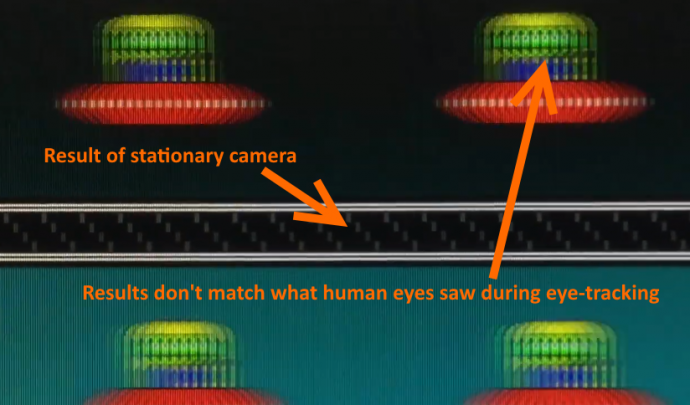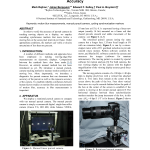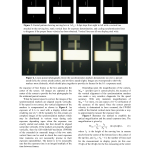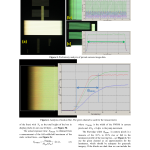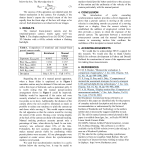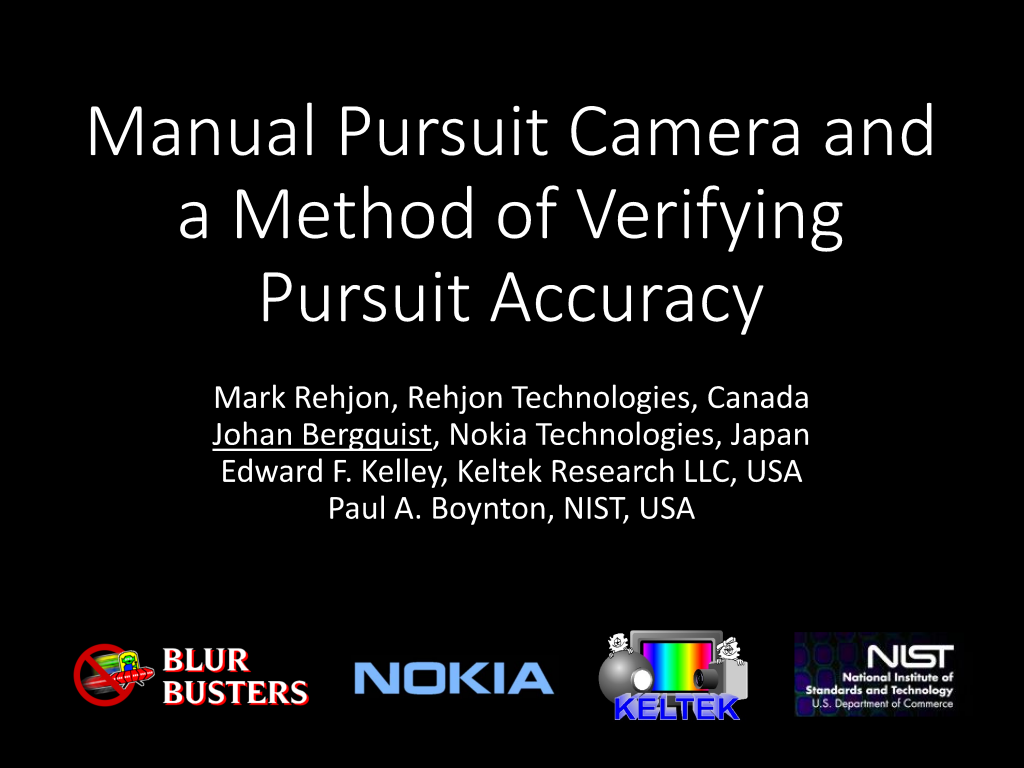Long-time readers are familiar with the various display-testing inventions of Blur Busters that are also used by multiple display reviewers, YouTubers, and manufacturers.
On July 31st, LinusTechTips used a Blur Busters pursuit camera invention, developed by Mark Rejhon, to compare the display motion blur between the new LG 1ms Nano IPS display and other gaming monitors! See 1m:25s into the video.
How Does The Pursuit Camera Work For Displays?
The goal is to photograph what the human eye saw on a screen. Photographs are more accurate with camera tracking (moving camera) since they can capture what eye tracking (moving eye balls) saw.
The most common pursuit camera for displays is usually a camera that slides horizontally to accurately follow horizontal motion on a display. Pursuit cameras can be motorized or non-motorized.
Demo Of Stationary Eyes Versus Tracking Eyes
Displays can look very different with stationary stare versus eye tracking on a display:
First, look at the stationary UFO, then look at the moving UFO. On most displays, the background looks very different, with an optical illusion occuring for the 2nd UFO. This divergence is caused by a display having a finite refresh rate.
This causes problems when you try to photograph displays during testing of displays, since the photograph does not accurately represent what the human eye saw. See additional animations:
- TestUFO Optical Illusion: Varying Speed From Stationary To Moving
- TestUFO Optical Illusion: Persistence Of Vision
Stationary Camera Versus Tracking Camera
Some of the TestUFO motion tests include a “Camera Sync Track”, which is a temporal test pattern that Blur Busters invented to allow photographers to verify accurate camera tracking speed.
The temporal test pattern looks like a horizontal ladder only when tracking matches the same speed as the UFOs. This is true regardless of whether eye tracking or when camera tracking.
Try it now; record video of testufo.com/ghosting with a hand-waved iPhone or Android following the UFOs! Even a low-quality video is still an educational demo of a pursuit camera:
Compare Stationary Camera Versus Moving Camera:
Here is a stationary photograph:
Now, here is a tracking photograph:
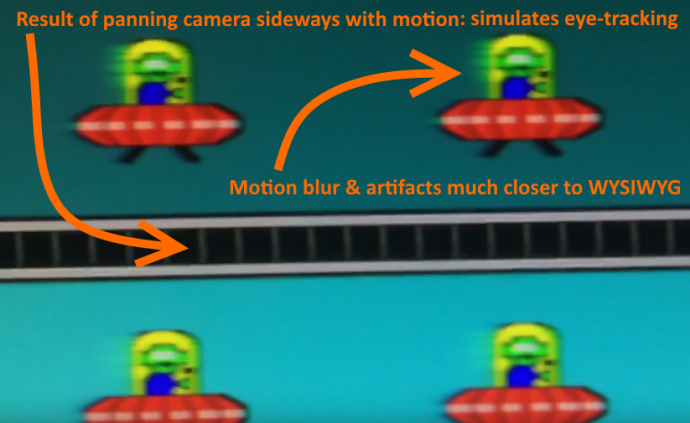
With Practice, Very Accurate Photography Of Display Motion Blur Is Achieved
The above animated PNG compares multiple overdrive settings on a 240Hz Acer XB252Q. The three photographs were taken by Jorim on a Samsung Galaxy smartphone mounted to a camera slider rail!
Hand-Waved Smartphone as Free Pursuit Camera — Zero Cost Approach
Hobbyists, bloggers, and YouTuber on lower budgets currently use this rail-less approach, combined with video recording (using 1/30sec exposure per frame). With a good modern smartphone camera; video does the equivalent of 30 photos per second (freeze frames). This increase the odds of an accurately-tracked image.
Best results occur if you download a third party video app that lets you manually adjust settings & exposure per frame. Single-stepping through a video file can find the clearest freeze-frame. The sheer number of images made possible by video recording, can eliminate a camera rail for hobbyists.
Other clever zero-cost methods includes mounting the camera to the top of a sliding container, or wooden blocks.
Camera Slider Rail For More Accuracy — Low Cost Approach
Major display reviewers such as RTINGS.com use a common camera slider rail to improve the accuracy of a pursuit camera. Here is an excellent YouTube demo of RTINGS pursuit camera:
Camera rails can also be used with smartphones mounted in a smartphone holder designed for tripods. With camera-rails, it is recommend to choose a camera with live burst-shooting capability or high-definition video.
Motorized Pursuit Camera — High Cost Approach
Pursuit cameras can also be motorized. Electronics can also synchronize the speed of the camera to the speed of moving objects on a screen. Some cameras rotate on an axis, while others slide horizontally.
Accurate motorized pursuit camera rigs can be extremely expensive (over $10,000). Several laboratories and manufacturers have historically used this approach before Blur Busters’ invention.
However, the temporal test pattern is also useful too for motorized pursuit cameras! Our invention simply behave as a motor-accuracy verification check. A motor that is too fast or too slow, will automatically distort our temporal test pattern. This provides a method of calibrating motor tracking speed or double-checking tracking accuracy!
Well-Tested Peer Reviewed Invention
Multiple bloggers, reviewers, YouTubers, vendors, and manufacturers now use the invention.
In 2014, our pursuit camera invention was validated by researchers from NIST.gov, NOKIA, and Keltek. Check out the peer reviewed conference paper. It was confirmed that the Blur Busters invention allowed low-cost manual pursuit cameras to match the accuracy of motorized cameras!
Pursuit Camera Invention Is Free
We only request credit when using our invention created by Blur Busters founder Mark Rejhon.
Additionally, the www.testufo.com website is free for anyone to use with credit. TestUFO is used by many reviewers, bloggers, YouTubers, and display manufacturers. See TestUFO Crediting Guidlines.
More Reading
- Instructions on Pursuit Camera
- Reviewers Using Pursuit Camera
- Making Of: Why Are TestUFO Animations At 960 Pixels Per Second?
- Forum Thread in Area 51: Display Science, Research & Engineering
- Blur Busters Law: The Amazing Journey To Future 1000 Hz Displays
Note: Blur Busters now offers paid services including services for display manufacturers.






